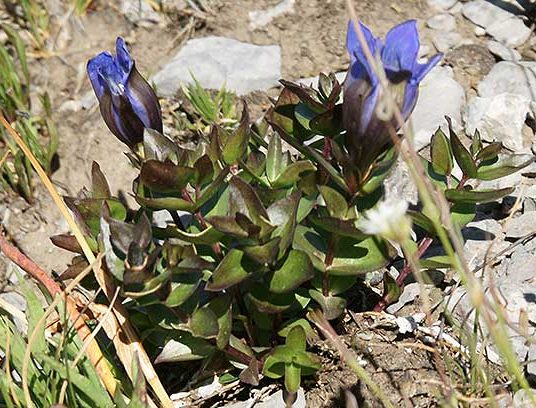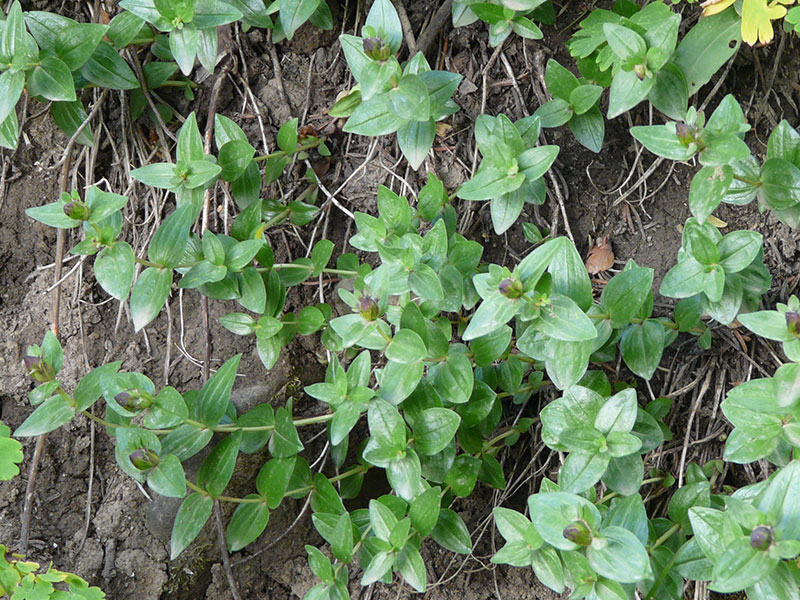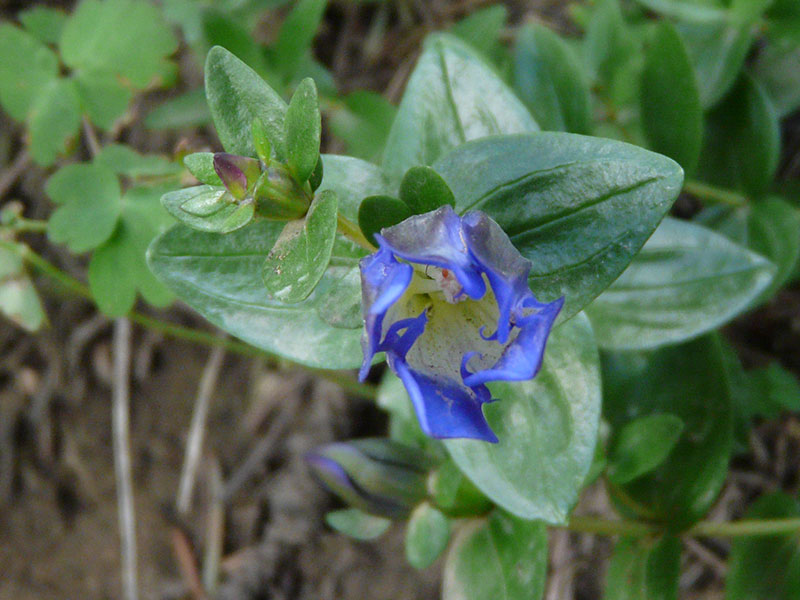Gentiana calycosa / explorer’s gentian
- opposite, sessile leaves on unbranched stems; clonal
- deep blue funnel-shaped flowers with white throats and yellow spots
- 5 pointed petals with fringed pleats between them
- in wetter areas at higher elevations
Also known as: bog gentian, Rainier pleated gentian, mountain bog gentian
As far as I can tell, all gentians are showy and beautiful. I would say this is especially true of the blue ones, and explorer’s gentian (or bog gentian) is the largest, showiest, highest, and latest blooming of those in Idaho. It is perhaps not especially rare, but nevertheless, when I find it, it makes me smile.
The bog gentian flower is a funnel-shaped cup (or an inverted bell) with 5, deep blue, petals up to 2 inches wide. In general, there is one terminal flower per stem, although sometimes there may be a cluster of flowers. The inside of the funnel is lighter (white-ish), often with yellow spots. The petals have pointy tips but not “fringes”. The lower parts of the petals, i.e. the base of the funnel, is yellow-green.
Between the petals, there are pleats… crumpled looking, triangular sections.
The plant itself has hardy, thick green leaves borne opposite and sessile on stems that are either erect or prostrate. One of the gallery photos shows this clearly. The leaves are rather oval, not lanceolate, thus distinguishing this from the pleated gentian. The stems tend to be thin, sometimes red, with the single flowers at their tops. Neither the stem nor the leaves is hairy. The whole plant grows from a branched caudex and is thus clonal.
Explorer’s gentian – or (for purposes of identifying the likely habitat, bog gentian) grows on creek banks in wet mountain meadows. It is found at mid to high elevations in stable, well-developed communities. It is considered shade intolerant although my own observation on the way up to the wind cave is that it must be tolerant of at least light shade.
| Color | |
|---|---|
| Family | |
| Blossom size | |
| Inflorescence size | |
| Inflorescence type | |
| When? | |
| Where? |



